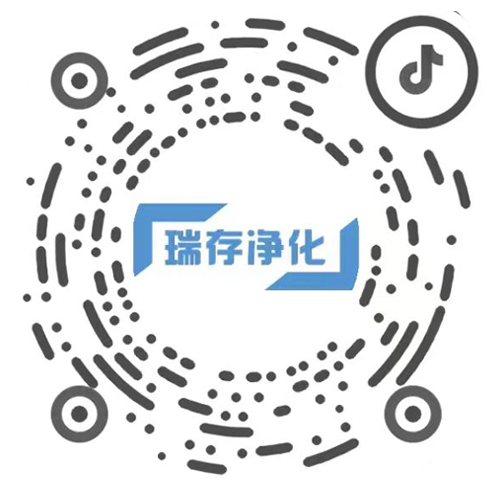News Center
Regarding the function and application of pressure gauge buffer tubes
2025/9/2
When designing and installing a pressure measurement system, the installation location, medium type, temperature, pressure and environmental factors must be comprehensively considered to select appropriate buffering and condensation measures, ensuring the accuracy of the measurement and the stability of the system.
In actual engineering, the functions of the pressure gauge buffer tube or condenser tube can be fully realized through a single component, the pressure gauge elbow. By choosing specific shapes and materials (such as carbon steel, stainless steel, copper, etc.), the pressure gauge buffer tube not only has the functions of buffering and condensation, but also simplifies the system structure and reduces costs.
A pressure gauge buffer tube is usually a curved pipe that provides a transition between the pressure gauge or pressure transmitter and the measured medium. Common shapes include circular bends and U-shaped bends. Although it seems simple, in practical applications, the pressure gauge buffer tube plays a crucial role and is the crystallization of wisdom in engineering practice. The following is a detailed description of the function and application of pressure gauge buffer tubes:
1. The function of the pressure gauge buffer tube
The main functions of the pressure gauge buffer tube include but are not limited to the following:
1) Connecting effect
The pressure gauge buffer tube introduces the medium to be measured into the pressure gauge or pressure transmitter, completing the connection between the pipeline system and the measuring device to ensure the smooth flow of the medium for measurement. In addition, it is flexible during installation and can be adjusted in direction and position according to actual needs.
2) Buffering effect
The buffer tube can effectively mitigate the instantaneous impact of the measured medium on the spring tube of the pressure gauge or the diaphragm of the pressure transmitter, reducing the measurement error caused thereby. This is crucial for reducing pressure fluctuations caused by unstable medium flow.
3) Cooling effect
Due to its appropriate length, the pressure gauge buffer tube can have a cooling effect when the medium flows through, thereby avoiding the influence of excessively high temperature on the measurement accuracy and service life of the pressure gauge or pressure transmitter. This is especially important when measuring high-temperature media.
4) Condensation effect
When the medium is steam, the cooling effect of the pressure gauge buffer tube can condense the steam into liquid or significantly reduce its temperature, thereby protecting the pressure gauge and pressure transmitter while ensuring the accuracy of pressure measurement.
5) Anti-inflammatory effect
The pressure gauge buffer tube can also play a role in shock absorption, reducing the vibration caused by the high-speed flow of the medium in the pipeline, thereby avoiding adverse effects on the accuracy and safety of pressure measurement.
6) Protective effect
For corrosive or high-temperature media, buffer tubes can reduce the direct contact between the medium and the pressure gauge or pressure transmitter, preventing the temperature and corrosiveness of the medium from damaging the internal components of the equipment, thereby extending the service life of the equipment.
2. Installation of the pressure gauge buffer tube
When installing the pressure gauge buffer tube, the following key points should be noted:
1) Location selection
The buffer pipe should usually be installed on the side of the medium to be measured, avoiding areas where the pipe bends, forks or generates vortices. If there are other devices inside the pipeline (such as RTD thermal resistors, throttling devices, etc.), the pressure tapping point should be set in front of them. If it must be installed near the control valve, the distance between the pressure tapping point and the valve should comply with the minimum requirement. If in front of the valve, the distance from the pressure tapping point should not be less than twice the pipe diameter. If the valve is behind, the distance from the pressure tapping point should not be less than three times the pipe diameter.
2) Direction selection
When installing, the pressure gauge buffer tube should be as perpendicular as possible to the fluid flow direction. This can ensure that the fluid flows smoothly through the pipeline and reduce shock and pulsation.
3) Reserved length
When installing, a certain length of pipe should be reserved to facilitate subsequent adjustment of direction and height. It is generally recommended to reserve a length of 25 to 50mm, but it should be adjusted according to the actual on-site conditions.
4) Support and fixation
After installation, it is necessary to ensure the stability of the pressure gauge buffer tube to prevent loosening and vibration. Reserve the bracket at the installation site in advance and ensure it is firm enough to guarantee the stability of the pressure gauge buffer tube.
5) Sealing standards
During the installation process, suitable sealing materials should be selected. Especially for applications with high temperatures or corrosive media, high-temperature and corrosion-resistant sealing materials should be chosen, and the thickness and sealing strength of the sealing gasket should be enhanced to prevent leakage.
6) Exhaust device
When installing pressure gauge buffer tubes at pipe elbows, it is necessary to consider setting up exhaust or liquid discharge devices based on the nature of the medium to ensure the regular discharge of condensate or gas and avoid affecting the measurement accuracy.
7) Safe operation
During the installation process, relevant safety operation procedures should be followed, suitable materials and specifications should be selected, personal protective equipment should be worn properly, and a safe operating distance should be maintained.
In conclusion, pressure gauge buffer tubes are widely used in industries such as petroleum, chemical engineering, natural gas, pharmaceuticals, and papermaking, playing a role in protecting equipment and enhancing measurement accuracy and stability. When choosing and installing, a comprehensive consideration should be made based on the type of medium, the on-site environment, and the requirements of the pressure gauge or pressure transmitter.






